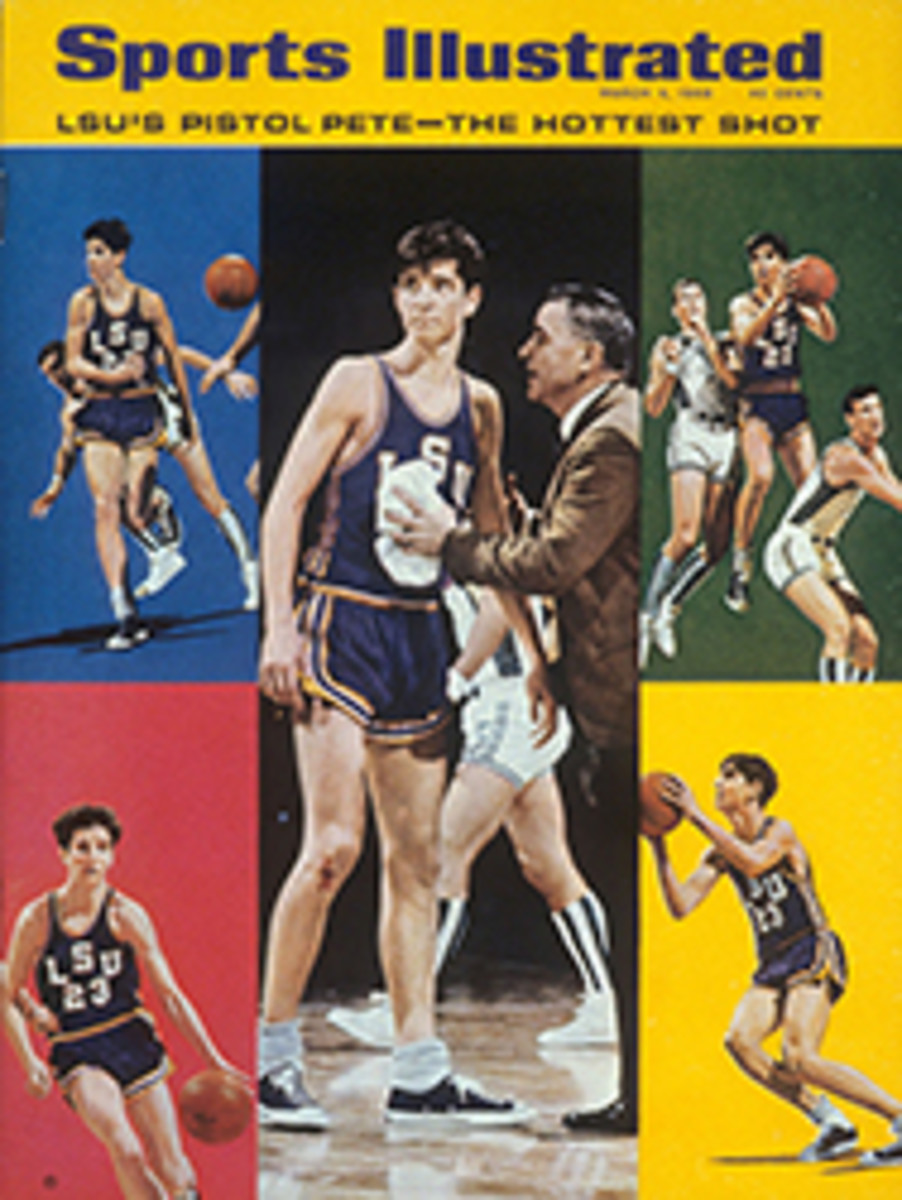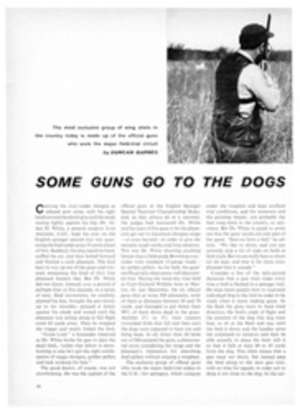
`Sure ain't fun no more'
Daytona Beach, Fla. has claimed the title of Speed Capital of the World ever since 1903, when Alexander Win-ton made the first run for the land-speed record on the seaside sands. That era ended in 1935. Sir Malcolm Campbell ran out of beach, after boosting the record to 276 mph, and moved his operation—and consequently everyone else's—to the Bonneville Salt Flats in Utah. Things were relatively quiet from then until 1959, when Bill France opened the Daytona International Speedway. Featuring big U.S. stock cars, it quickly became known as the world's fastest race oval.
The 10th Daytona 500-mile stock-car race this Sunday did nothing to hurt the superspeed image. It was fitting that Cale Yarborough won the race over Lee Roy Yarbrough in a magnificent 25-lap sprint to the checkered flag, their nearly identical 1968 Mercurys only a second apart as the 80,000 spectators stood and screamed.
Their duel was just the right snapper to the events of the previous 2½ weeks, days when car after car skittered and slammed around the high-banked course at speeds approaching 190 mph—speeds just a little bit beyond comprehension.
The record-breaking began on February 7 when Cale Yarborough and Tiny Lund opened the first day of practice by careening around at 185 mph. David Pearson boosted that to 190. On February 11, when the drivers got down to qualifying for the 500, Cale won the pole position at 189.222 mph and all of a sudden little knots of brave men were talking to each other—and to themselves. For the statistical-minded, that speed represented an 8.4-mph jump over last year and a whopping 46-mph—or 30%—boost over the fastest qualifying time nine years ago. (Indianapolis single-seat-ers are probably capable of 210 mph at Daytona, but nobody has put them to the test there since 1959, when the only Indy-at-Daytona racing killed two drivers.)
Cale's only comment, "You don't drive these cars anymore—you aim them," had the no-nonsense brevity you might expect from someone who spent his idle hours as a kid wading barefoot through the swamplands near Timmonsville, S.C. to catch water moccasins barehanded, and who made 200 free-fall parachute jumps before somebody suggested he hook up his chute to a static line. Other drivers didn't take the speeds so casually. Lund, as hard a charger as stock-car racing has seen, said, "You drive a lap and get into those turns and you just don't think you can get around. But you do, and then you say to yourself, I did it the last time, maybe I can do it just one more lap.' I'm not scared of it, just a little uneasy. But, boy, driving down here sure ain't fun no more."
Three factors contributed to the general uneasiness. First, above 180 mph a car cannot follow a clean groove around the course. In the turns especially, where a force of about 2 Gs is trying to push the cars right off the edge of the racetrack, they tend to use up all the track they can find. Second, the drivers' straight-ahead vision in the turns is limited to approximately 150 feet. At 180 mph a car travels 264 feet per second. The implications are obvious.
The third factor is drafting, where a car follows bumper-to-bumper in the partial vacuum of another racer and, in essence, is "towed" around the track. Everybody knew what happened in that situation up to 180 mph. Above that, nobody did until last month: it was like driving an outboard motorboat in the wash of the Queen Elizabeth.
Ford's Bobby Allison said, "Every time you make a lap you see the skid marks and gouges on the track and the wall. They're going to be there indelibly for all time."
Even Glen Wood, the chief mechanic of Cale's winning car, contributed his bit. "Used to be there were places out there you could relax," he said, "especially on that long back chute [3,300 feet of it]. Now those cars are squirrely all the way around."
And even Lee Roy said, "You know, you hear a lot of stories about how wild race drivers are and all that. But I'll tell you, at 190 mph you get all the thrills you want. This track and those speeds make a gentleman out of you in a hurry."
Lund, 250 pounds of him, put it as well as anyone when he said, "It's gonna be a ride and a half out there Sunday."
He was right, of course. To hardly anyone's surprise, the race was slowed by 11 caution flags for accidents, which cut Cale's winning time to 143.251 mph, or a speed 11 mph slower than Richard Petty's 1964 record.
The worst mishap occurred just past the halfway point, when Mario Andretti—the Indy import—and Buddy Baker, both of whom had led the race, tangled violently coming off the No. 4 turn and spun down to the infield area in front of the main grandstand.
Andretti, who may be the most unflappable driver around, was visibly flapped. "Baker hit me from behind and I spun," he said. "He shouldn't have been so close." It took Baker a full half hour to get his flaming temper under control. Then he said, "Hell, Mario lost it, plain and simple. He was already going backward when we hit."
Other contenders fell back because of one mishap or another. Richard Petty's Plymouth lost the molding around the windshield, and getting the window literally taped back onto the car cost him two laps. A. J. Foyt, in a Ford, first stalled in the pits, then retired with engine trouble. Donnie Allison crumpled the suspension of his Ford when he hit the wall on the No. 2 turn of the D-shaped track, and his brother Bobby had a cylinder conk out with 50 miles to go. But Bobby still managed to limp home third.
Bobby's slowdown left the track to Cale and Lee Roy when the last yellow caution flag was lifted—with just under 60 miles to go. At that time Lee Roy had the lead by nearly 10 seconds, but by the 190-lap mark Cale was within range—two seconds behind. Four laps later the margin was just .6 of a second, and on the back straight of the next lap the stocky redhead made his first bid for the lead. He pulled even with Lee Roy and actually led going into the No. 3 turn. Lee Roy, who was higher on the track and thus had more driving room, just kept going and regained the first position by the time the two cars had emerged from No. 4.
The next time around Cale, who simply had more horsepower, got by Lee Roy for keeps and led him to the finish line by a few car lengths. Cale barely saw the checkered flag. Just before he hooked up with Lee Roy he had got stuck behind David Pearson, whose Ford was spraying oil all over everything, including Cale's windshield. "I couldn't see a thing," Cale said.
He saw enough. When it was over, he and the 49 other drivers could relish another thrill—of having come out of the race with their hides intact.
"When February is over," said one, "I feel I've got another 11 months to live."
PHOTO

